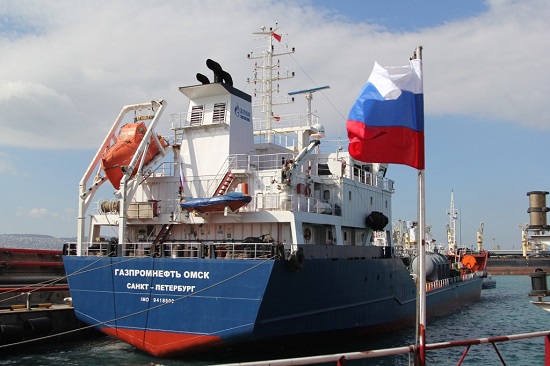Russian seaborne crude exports fell 10% on the month in June to their lowest levels since February, according to tanker tracking data, as sales to refiners in India and China slipped back from a post-war high.
Russia-origin seaborne crude shipments averaged 3.46 million b/d in June, the lowest since February but still 12% above average pre-war levels of 3.1 million b/d, according to S&P Global Commodities at Sea data.
Flows to India fell the most, by 300,000 b/d on the month, while crude exports to China slipped by 150,000 b/d, the data showed. Shipments rose to some other destinations, however, with flows to Egypt at 175,000 b/d in June and ship-to-ship transfers off Greece growing to 150,000 b/d, the highest since February.
The crude export fall follows a 12-month high in May when Indian refiners snapped up record volumes of discounted Russian crude, and the data comes as Moscow pledged a surprise export cut of 500,000 b/d in August to help support global oil prices.
Moscow had already promised to cut its crude output by 500,000 b/d to the end of the year from March but market watchers did not expect Russia to follow through given its recent surge in export volumes.
The recent export slide also comes amid narrowing discounts for Russian crude.
Urals crude delivered to India’s west coast priced against Forward Dated Brent narrowed to a $9.60/b discount on June 30, the tightest spread since Platts, part of S&P Global Commodity Insights, began assessing the differential on Jan. 18. The discount for Urals FOB at the Baltic port of Primorsk to Dated Brent has also halved since the start of the year and stood at a post-war low of $20.10/b on July 3, Platts data showed.
“India and China continue to capitalize on discounted barrels of Russian crude,” S&P Global analysts said in a June 28 note. “Russian exports continue unabated despite softening in June, with the lion’s share heading to Asia. These new trade flows are a structural change that is expected to remain.”
Despite raising questions over the stability of Russia and the security of future Russian oil supply, the attempted coup by the Wagner Group did not impact production, refining or export areas at the end of the month.
Offshore transfers
The data showed fewer Russian crude barrels were now being swapped at sea in ship-to-ship transfers after offshore transfers volumes peaked in February.
Through June 25, 7.77 million barrels of Russian crude changed hands at sea, of which 73% or 5.67 million barrels were rerouted crude toward India, shipping data showed.
The EU formally adopted June 23 its latest sanctions package against Russia, which includes measures to clamp down on offshore tanker transfers of Russian oil and a ban on Russian crude flows via the northern branch of the Druzhba pipeline.
Aiming mostly at blocking the circumvention of existing sanctions against Moscow over its war in Ukraine, the EU’s 11th sanctions package covers provisions to ban ships from EU ports if the vessel is suspected of engaging in ship-to-ship transfers of oil in breach of the Russian oil import ban or G7 Coalition price cap.
Oil products
Russian oil product exports recovered by 80,000 b/d in June to 2.49 million b/d, the data showed, following lower amounts in April and May due to high levels of seasonal refinery maintenance.
Turkey consolidated its lead as the biggest buyer of Russian fuels in June, with deliveries jumping 40% to a record high of 583,000 b/d, according to the data. Turkey imported lots more Russian gasoil, jet, naphtha and other clean products which more than offset lower fuel oil shipments.
Russian fuel exports to the UAE also jumped last month, the data showed, hitting a 12-month high of 305,000 b/d. Home to Fujairah, the world’s third largest bunkering hub, the UAE has been importing large volumes of Russian fuel oil, gasoil, gasoline, naphtha and VGO. Russian fuel shipments to the country surged soon after Moscow’s invasion of Ukraine, briefly making it the biggest buyer of Russian fuel as European refiners shunned the country’s oil.
Combined with crude, total seaborne Russian oil exports slipped to 5.95 million b/d in June, the data showed, the lowest since February.
Recording changes to Russian oil exports and EU oil imports since the war in Ukraine
Russia’s war in Ukraine has triggered a major upheaval in the global oil markets, forcing Moscow to find alternative buyers and Europe to source new supplies as Western sanctions seek to clamp down on Moscow’s vital oil revenues.
With an EU embargo and the G7 price cap on Moscow’s oil now fully in place, Russian seaborne crude exports remain resilient as more volumes head East. Russian oil product exports have suffered, however, with new buyers in Africa unable to absorb Russian fuels displaced from Europe.
Source: Platts

